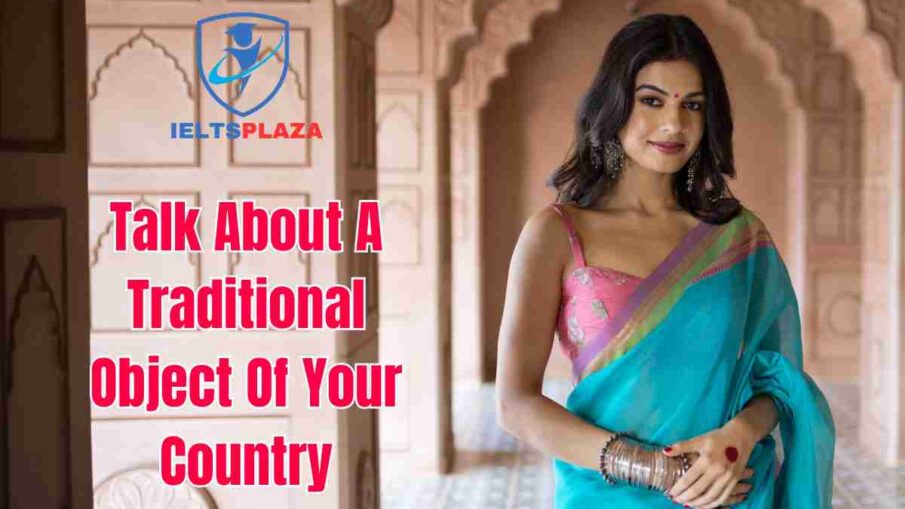Talk About A Traditional Object Of Your Country
- What is it?
- How is it made?
- When did you try it for the first time?
- Why do you like it?
Sample Answer of Talk About A Traditional Object Of Your Country
A saree, which is an elegant and timeless garment that signifies Indian culture and heritage, is one traditional Indian object that I hold dear. A saree is a long cloth usually measuring between five and nine yards, draped around the body in an artistic manner typically over a petticoat with one end thrown across the shoulder revealing a bare midriff.
There are different materials used in making sarees such as silk, cotton and synthetic fibers while its production process amounts to an art form itself. Certain types of sarees are handwoven with complicated designs; others are embroidered with intricate details; still others are manufactured by using traditional ways of printing. The richness and diversity of patterns for saree as well as weaving techniques greatly vary between different states of India and each has its own story to tell through motifs or colors.
As a teenager during my family wedding, I once tried wearing a saree for the first time. This made me appreciate how beautiful and classy the Indian attire can be and also connected me back to my roots culturally.
The saree is a garment that can be worn by anyone despite of age and body type; it never fails to look good on anyone. The saree is more than mere apparel. It represents the tradition of India thereby symbolizing elegance, dignity and cultural pride. For me wearing a saree which is an object of immense value is a rare ethnic experience that connects my roots and culture represented in its beauty
Follow ups Talk About A Traditional Object Of Your Country
Question 1 What advantages do traditional items offer to locals?
Answer – For the locals, traditional items have several advantages the most important of which is creating a strong feeling of identity and unity. These objects that are soaked in history and culture act as physical links to ancestors; they maintain cultural heritage. Also, they frequently embody ancestral handiwork thus promoting local businesses and artistes. Furthermore, traditional items foster community integration when they are showcased during cultural festivities and rituals, thereby bringing together people with similar backgrounds who take pride in their own cultures.
Question 2 Do you believe that the government should promote traditional products?
Answer – No doubt, governments must actively encourage traditional products. This promotion supports cultural heritage preservation and local economy growth through backing up craftsmen and craftswomen in the country. Otherwise, it will be possible to push traditional products on a worldwide market thereby developing county’s cultural identity that will attract tourists as well as international community. It is not simply the retention of the colorful variety of our nation’s customs and values but also their appreciation and worth by generations yet unborn that governmental initiatives should strive for.
Question 3 Did the customary items of the past have greater worth than those of today?
Answer – Past customary items are usually more valuable than the contemporary ones because of their workmanship, scarcity and historical contexts. Artisans made these objects with great care, skill and professionalism in order to produce quality items. In addition, these articles act as a bridge between the current generation and their history by carrying cultural knowledge. Conversely, today’s goods are often mass produced and hence lack the depth of connection and craftsmanship involved in traditional items; therefore, cultural heritage and personal significance make traditional goods more valuable than mass-produced commodities today.
Follow- Us on IELTSPlaza Pinterest

Leave a Reply